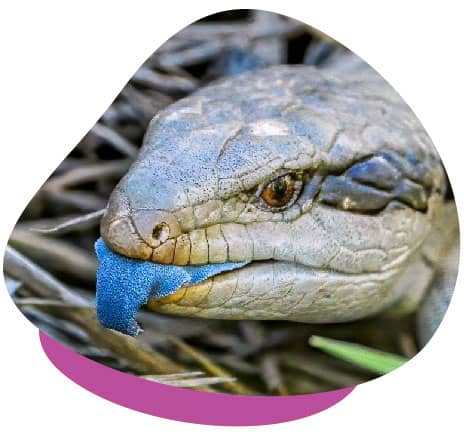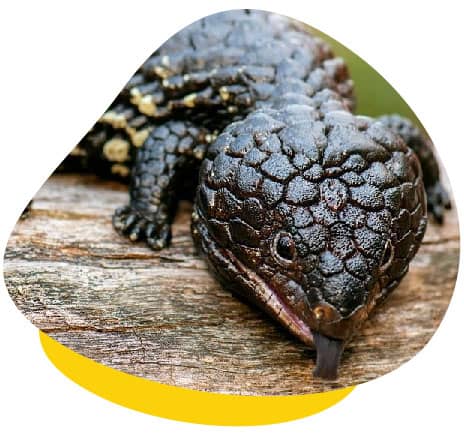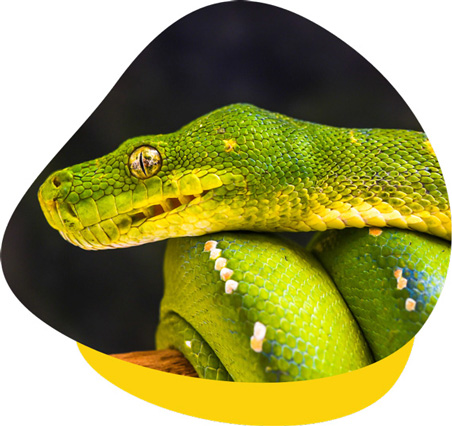There are a growing number of viruses that can seriously affect our pet reptiles. Some of these viruses have serious immediate and long-term consequence, and just like in people, many of these viruses do not have any specific treatment.
It is important to identify carriers early so measures can be put in place to support them and to reduce the risk of spread to uninfected individuals. If infected, reptiles are generally given supportive care and treatment for secondary bacterial, fungal and parasitic infections.
Below is a list of the common viruses seen in snakes and lizards throughout Australia.

Snake-Specific Viruses
Unfortunately, the majority of snake viruses result in progressive disease with a poor prognosis. Treatment is aimed at keeping the reptiles comfortable for as long as possible and restricting their access to new reptiles to prevent transmission.
The viruses outlined below can be tested by sending off a swab of the reptile’s saliva and cloacal secretions to a laboratory for PCR (polymerase chain reaction) testing. If a reptile succumbs to disease, tissue samples can be collected for viral testing which is the most accurate test that can be performed.
It is important to note that many snakes can be asymptomatic carriers (have the virus but not display any signs of illness) for several months or years before becoming unwell. These snakes are often the cause of viral spread to other snakes.
Signs to watch out for relate to the virus’s effect on both the neurological and respiratory systems. Neurological abnormalities include; posture abnormalities, tremors, head tilts, paralysis, and inability to strike prey.
Respiratory signs such as difficulty breathing, increased respiratory effort, gurgling or bubbling from the nose may indicate a viral cause for your snake’s clinical signs.

Common Viruses Seen in Snakes
Bornavirus
Bornavirus is difficult to detect in its early stages and results in encephalitis (inflammation of the brain tissue).
Sunshinevirus
Sunshinevirus can cause both neurological and respiratory disease.
Nidovirus
Nidovirus is often also associated with respiratory disease and stomatitis (inflammation of the mucous membranes).

Lizard-Specific Viruses
Similar to snake-specific viruses, lizard viruses manifest as neurological or respiratory disease. Some hold a better prognosis than others and treatment is based on supportive care and addressing secondary infections.
Common Viruses Seen in Lizards
Shingleback Nidovirus 1
As the name suggests, this virus causes disease in shingleback lizards and bluetongues. It is also referred to as the “Bobtail Flu” as it causes respiratory ‘flu-like’ disease.
With supportive care and early intervention, success rates are generally good for recovery. The virus can be tested for with a PCR test that simply requires a swab of the reptile’s mouth and oral cavity.
Adenovirus
This virus causes severe liver disease in lizards which can result in the neurological symptoms, sudden death or general lethargy. Diagnosis is also achieved by PCR testing.

Reptile Veterinary Care
Reptiles are very good at hiding their health problems until they have become very serious. It is recommended that you get your reptile examined by an experienced reptile veterinarian at the time of new ownership and every 6-12 months thereafter.
Reptile Quarantine
The length of quarantine is a contentious area with many different protocols implemented across the world. With the recent advancements in our understanding of reptile viruses and diseases it now appears that we may not be able to ‘out-quarantine’ some of the newly discovered reptile viruses, which makes recommending a time-frame complicated.
Most reptile veterinarians now recommend a quarantine period of at least 6 months for newly acquired snakes. Quarantined animals should be kept in a separate room with no shared contact or airspace.


Any handling, feeding or cleaning of the cages from affected animals should be completed last, after all, other non-quarantined animals.
If further work needs to be done with the rest of the collection after the animals in quarantine, then a complete change of clothes and thorough disinfection of hands and any equipment used is necessary.
If you have any further questions about your reptile, please don’t hesitate to contact us.

